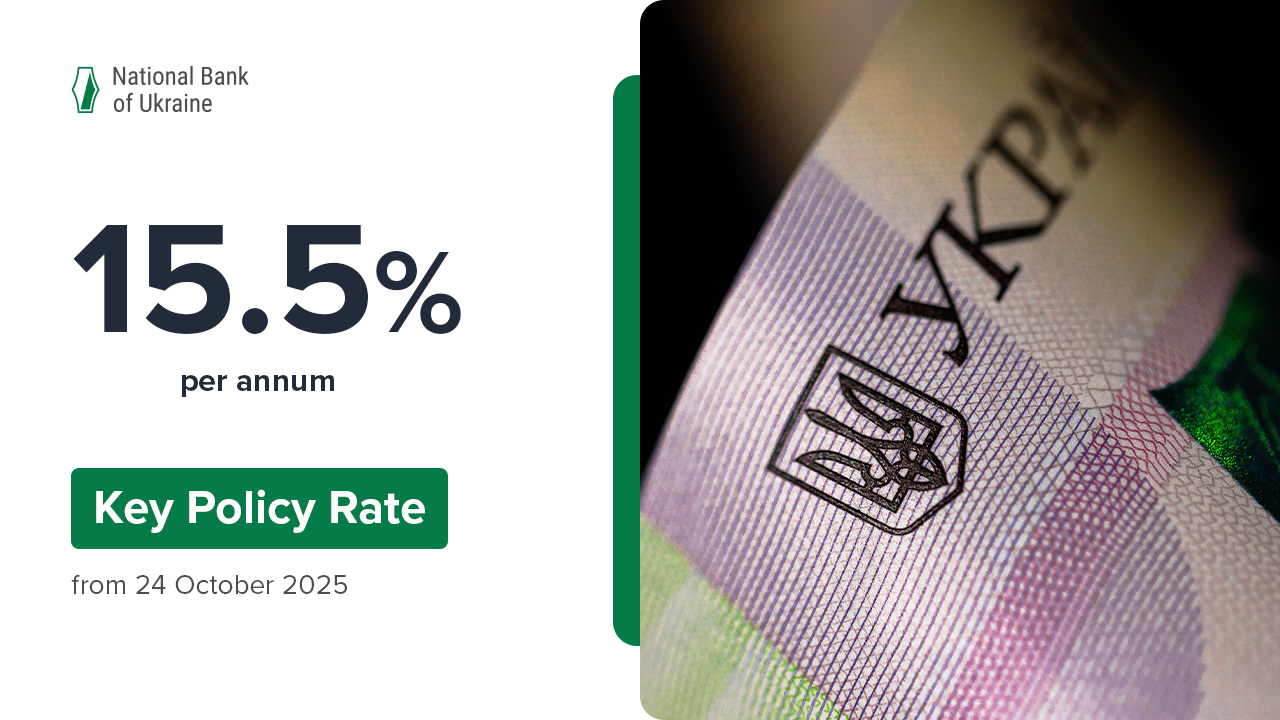Given that core indicators of resilience – capital adequacy, liquidity, profitability, and loan quality – are at their historical highs, the banks have been lending increasingly more to businesses and households, competing intensely for quality borrowers, and easing lending conditions. This is according to the Financial Stability Report.
Banking conditions have remained favorable in H1 2025
Economic growth continues thanks to robust consumer demand, but is being held back by labor shortages. There is a growing sense of production capacity being limited by security risks. Investments are primarily being made to strengthen Ukraine’s defense capabilities and energy efficiency. Ongoing hostilities are limiting room for fiscal consolidation and reduction of the external-accounts deficit, meaning that financial support from international partners remains a key cornerstone of macroeconomic and financial stability.
Banks are increasingly scaling up lending to businesses and households
Enterprises have maintained solid financial performance and creditworthiness and thus remained sought-after clients for banks. However, lending continues to play only a moderate role in household consumption. In April, the annual rates of growth in the net portfolio of hryvnia loans to households and businesses reached 34% and 29%, respectively, so the loans to GDP ratio is rising. The banks in all groups are building up their portfolios. Financial institutions are actively competing for customers by improving the quality of services and maintaining interest rates at moderate levels. By preserving prudent lending standards, the banks ensure that the quality of the new loan portfolio is high.
Further narrowing the focus of state lending support will increase its effectiveness
The share of subsidized loans in hryvnia loans to businesses is already less than one-third, while in the mortgage segment, state-supported mortgages account for over 95%. As room for ramping up subsidized-mortgage volumes is limited, scaling up mortgage programs requires greater reliance on the liquidity currently available to the banks. Mortgage development also requires a number of infrastructure changes that will be reflected in the Mortgage Development Strategy.
Market rates on corporate and retail deposits have risen
This is a response to the cycle of key policy rate hikes conducted late last year and adjustments to the operational design of monetary policy. Market rates increased faster for corporate deposits and somewhat slower for retail deposits and loans. The banks’ net interest margin has edged lower. As inflationary pressures ease off, market rates are expected to decline, putting more pressure on margins amid a lower return on assets. The banks should therefore consider these risks when planning their asset composition and develop lending more actively.
Banks’ losses due to operational risk remain high
However, these losses have shrunk relative to the first years of the full-scale invasion, meaning the NBU can adjust how the capital required to cover operational risk is calculated, in line with the EU approach. This will free up some of the banks’ capital. The banks continue to use net profits to replenish capital, so capital is currently contributing to the growth in lending. However, the repeated retroactive application of the hiked income tax rate is fueling high uncertainty.
Annual resilience assessment is ongoing, as is harmonization with EU acquis
The asset quality review – the first stage of the resilience assessment – has confirmed that the banks’ overall assessments of their credit risks are correct. Stress testing is underway to assess the banks’ resilience against hypothetical external shocks. If the results of the resilience assessment show that some of the banks must comply with increased capital adequacy ratios, such financial institutions will be required to draw up capitalization or restructuring programs and implement them by the end of the year. The resilience assessment will also pave the way for setting an optimal schedule for implementing capital buffers, which is to be approved by the NBU before the year is over.
Efforts to align the regulation of the banks and NBFIs with EU standards are underway. The next steps in this process are the introduction of leverage ratio requirements, new requirements for credit risk coverage, components of settlement risk, and credit valuation adjustments. The planned acquisition of regulatory equivalence status from the European Commission will facilitate more active lending by Ukrainian subsidiaries of European banks. The NBU expects to move closer to commencing the formal equivalence assessment process within a year.







